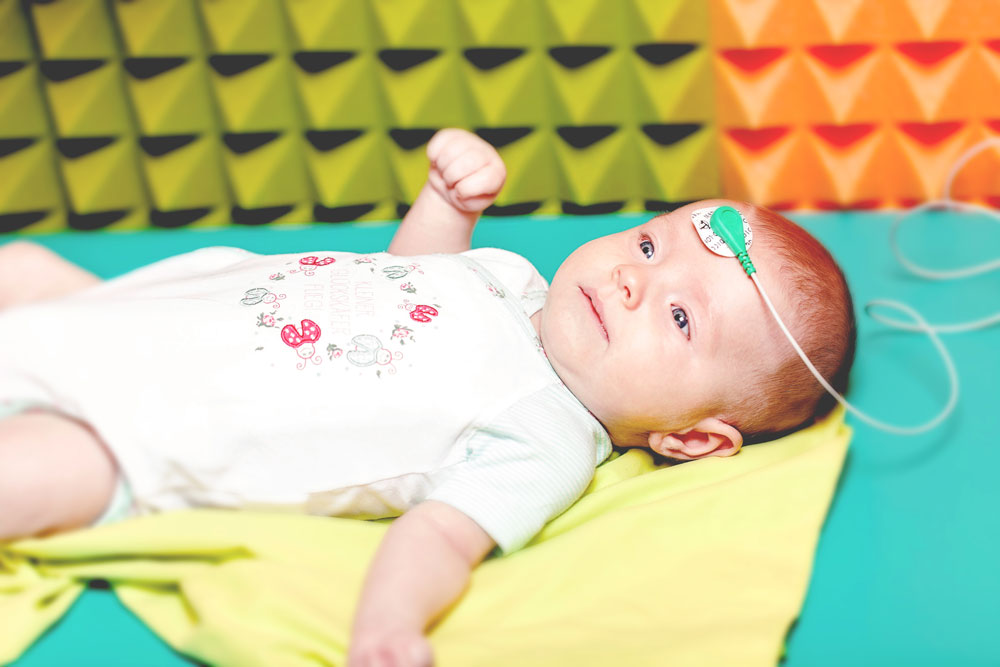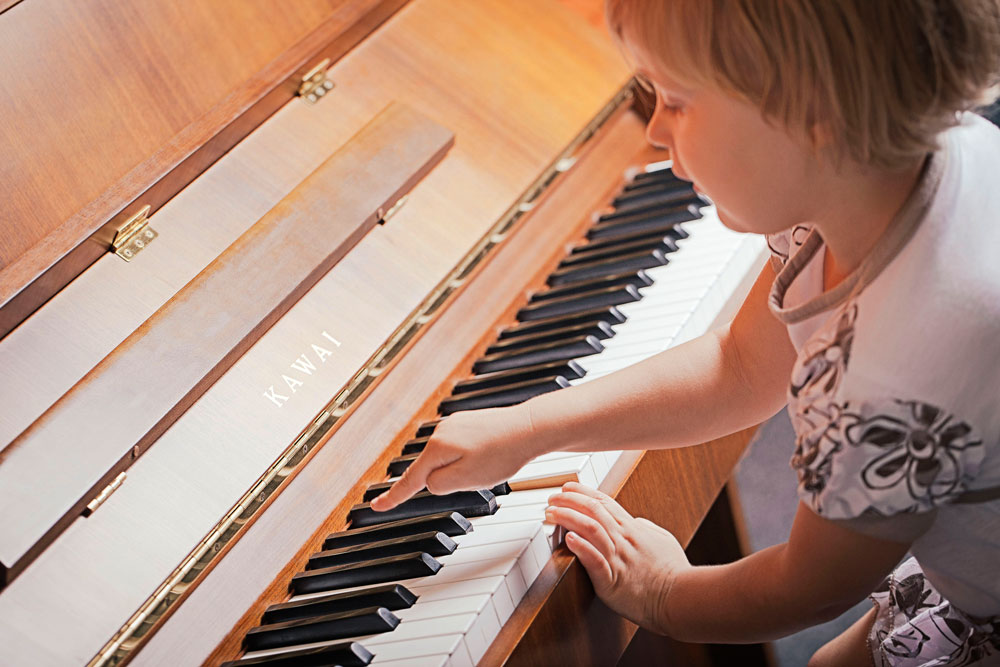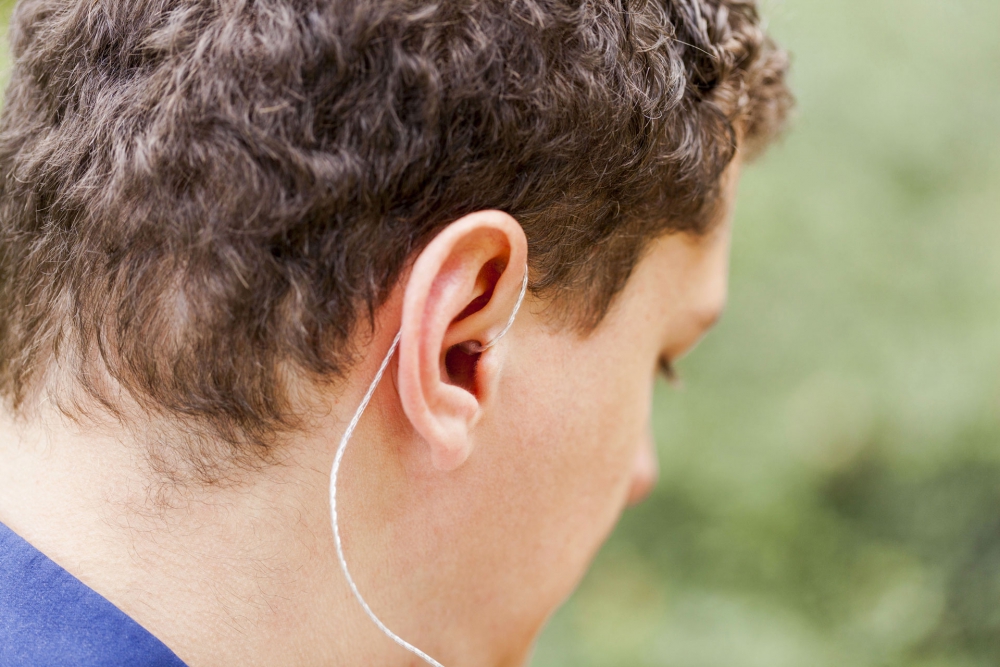Clinical diagnostics and hearing loss treatment
Hearing loss doesn’t have to be a burden to you! All you need to do is choose an appropriate regeneration program and you can start enjoying your great hearing again!
Hearing loss

Hearing loss testing for adults and children
In our clinics we have an access to the latest advanced technologies of hearing tests, such as high frequency audiometry test up to 20 kHz (used to examine activity range of inner and outer auditory cells), 3D Tympanometry (for advanced diagnostics of inner ear and the range of conducting frequencies by auditory ossicles), Otoacoustic emission and ABR (threshold, training, neurodiagnostics). Last two are used to examine structure of nervous system from ribbon synapses to lateral lemniscus (midbrain fibers concentration). Using ASSR technology, we are able to activity and eurhythmics of neuron oscillation in the auditory cortex. In our clinics you will find any medical test needed to answer all questions concerning tinnitus and the process of nervous system development in both adults and children. Additionally, we perform diagnostics of cognitive processes with use of (BATERIA TESTU). Thanks to this system we can evaluate children’s memory from sensory memory, short-term audio-visual memory in relation to dynamics and independence of cerebral hemispheres. Due to diagnostics of cognitive skills based on individual parameters, we select speech processor or hearing aid technology. We aim at getting the best possible effects of auditory cortex regeneration after hearing loss.
Hearing aids
Hearing aids
In our clinic we also perform the very first and advanced rehabilitation program of the nervous system after long-term hearing loss, selection and regulation of hearing aids and rehabilitation of speech recognition in noise for patients whose hearing aids haven’t brought any results. During hearing loss, we observe reorganization and loss of the big part of the auditory cortex which is filled with neurons. If hearing loss sustains for a longer time, neurons from the auditory cortex start to migrate to the visual cortex or they empower other sensory regions. The auditory cortex thereby looses neurons important and necessary in speech understanding. A patient who purchases a hearing aid in one of our clinics, will be provided with an additional, 6-month rehabilitation of neurons from the auditory cortex. Normally, it takes 10 000 hours of wearing a hearing aid to rebuild the structure of the auditory cortex. Musical and multisensory training shortens this time to around 5 000 hours. Brain Volts Laboratory of University in Northwestern proves in their studies the influence and effectiveness of implementing training to everyday hearing rehabilitation of children and adults. Below, you can access all necessary information and research studies about this program.
Rehabilitation

Music Enrichment Programs Improve the Neural Encoding of Speech in At-Risk Children
Music training alters the course of adolescent auditory development
MUSIC TRAINING LIFELONG INVESTMENT TO PROTECT THE BRAIN FROM AGING
Music training relates to the development of neuralmechanisms of selective auditory attention
Rehabilitation
Except hearing aid devices, our clinics provide patients with specialized program of rehabilitation and reconstruction of hearing region, which may last from 6 to 12 months. It consists of musical and multisesnsory traning
Musical training is a program created exclusively for implant and prosthetic patients in order to improve their speech perception and speech recognition in noisy environment. Despite using technology of hearing aids and implants, a patient faces a problem of hearing speech in noise and among many interlocutors. Meeting patients’ needs, we created a special program with School of Communication in Northwestern (USA), which is based on playing an instrument and practicing frequency discrimination. Somatosensory stimulation (fingers movement on a keyboard) and stimulation of the auditory cortex with diverged tonal combination of octaves, create a possibility of double stimulation of the auditory region. As a result, it leads to two-fold development of the auditory cortex. After six months of even short-term musical training, medical imaging research showed an increase of hampering neurons population in the auditory cortex of patients with very serious hearing losses. Hampering neurons are responsible for sound clearance; therefore, the more we have, the better we are able to hear. As test results show, musical training speeds up reorganization of regions responsible for hearing, improves our memory, concentration, perception and sending information between cerebral hemispheres. It fosters creative development and improves speech recognition in noise and among many interlocutors of 70%.



